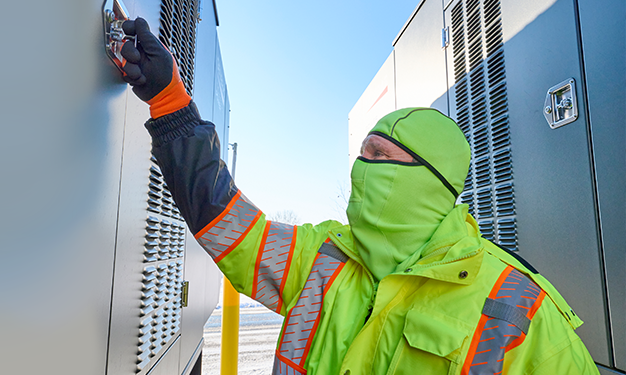September 2023
Cold Weather is Coming!
Assess Your PPE Needs Now.

In 2020, the U.S. Bureau of Labor Statistics reported that ice, sleet, or snow accounted for 41.5% of weather-related workplace fatalities. Winter conditions are incredibly dangerous for your employees, and winter slips resulting in cold stress, fractures, sprains, and strains can rack up an average of $35,111 in the average cost of lost time workers’ compensation insurance claims! Using statistical reports submitted to the National Council on Compensation Insurance, Inc. for policy years 2015-2017, OSHA states that managing a fracture costs $54,856, $23,078 for frostbite, $30,487 for sprains, and $32,023 for strains.

Did you know that employers must survey their workplace to determine if cold-weather hazards are present that would necessitate the use of personal protective equipment (PPE)? Keeping your workers safe isn’t hard; it can be as simple as having workers dress in layers or providing a way to keep workers from slipping on ice and snow-covered walking-working surfaces.
In a cold environment, most of the body’s energy is used to keep the internal core temperature warm. Over time, the body will shift blood flow from the extremities (hands, feet, arms, and legs) and outer skin to the core (chest and abdomen). This shift allows exposed skin and extremities to cool rapidly and increases the risk of serious cold-related injuries and illnesses.
When you conduct a hazard assessment, you will evaluate whether your controls and work procedures give your workers enough protection from cold stress. If they do not, you will need to provide PPE.

Hazard Assessment
If you’re performing a cold-weather PPE assessment, start with a walk-through survey of your workplace (inside and outside) to assess the need for controls and PPE. The survey aims to identify all sources of cold-stress hazards to workers and coworkers. Consider basic hazard categories such as:
• Working in cold environments,
• Exposure to cold processes, and
• Chemical reactions.
During the walk-through survey, observe sources of the hazards such as:
• Inclement weather events or hazards like cold stress,
• Low temperatures that could result in burns, eye injury, or ignition of protective equipment, etc.;
• Dry ice or other chemical reaction exposures;
• Air conditioners,
• Indoor/outdoor cold environments; and
• Chilling/cold bath dipping/submersion.
Consider the workplace layout and workers’ location as you note cold-stress hazards. In addition, review injury/illness data to help identify problem areas. If employees work outdoors during inclement weather with ice, snow, or sleet, determine if they need PPE for stability on ice and snow with ice-traction cleats.

Interpreting Data and Dressing in Layers
Organize your data and information after the walk-through survey to prepare for an analysis of the cold hazards. The analysis will enable you to select proper protective equipment. For example, if your workers work between indoor and outdoor cold environments, a 3-in-1 fleece-lined jacket protects them by helping them stay warm and remove layers as needed as they move indoors. Dressing in layers helps to prevent your body heat from escaping. Each layer provides insulation between the cold air and your body.
Having gathered and organized data on a workplace, an estimate of the potential for injuries should be made. Each of the basic hazards should be reviewed, and a determination made as to the type, level of risk, and seriousness of potential injury from each hazard found in the area.

Improper Fit
The possibility of exposure to several hazards simultaneously should be considered. For instance, while figuring out what kind of cold-weather PPE is appropriate for your workers, ensure that it fits well and is comfortable. Ill-fitting PPE can feel bulky and unbalanced to the wearer, even when adjusted according to the manufacturer. They can cause pinch points, headaches, and neck and shoulder strain.
Women often have to choose between wearing PPE designed to fit males or not wearing PPE due to improper fit and subsequent discomfort. Select PPE with the proper size for each employee in mind, and offer PPE in women’s sizing. Reassess your workplace hazard situation as necessary. Identify and evaluate new equipment and processes, review accident records, and reevaluate the suitability of previously selected PPE.
Winter brings additional hazards to consider, but with a proper assessment and the right PPE, your workers can remain safe!
NOW SAVE 10% ON J. J. KELLER® SAFEGEAR® WINTER GEAR
We’re making it even more affordable to prepare your employees for winter work. From now through October 11, you can save 10% on your cold weather PPE.

